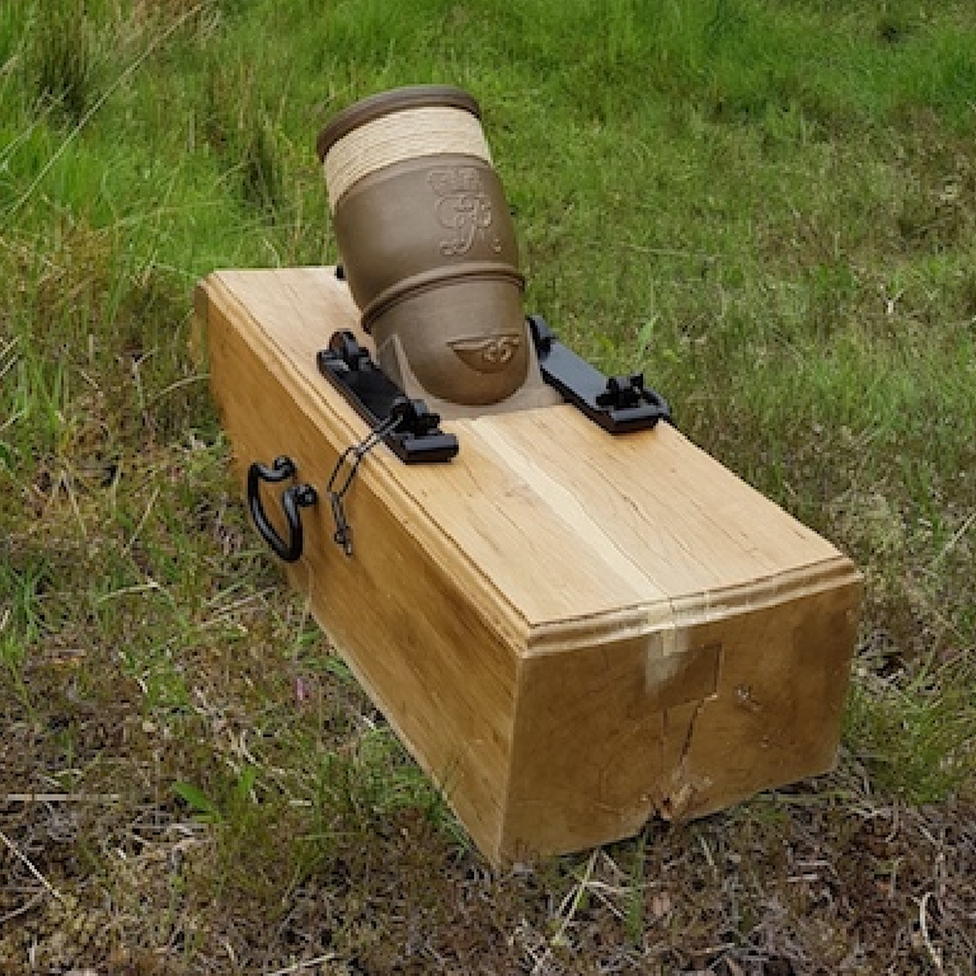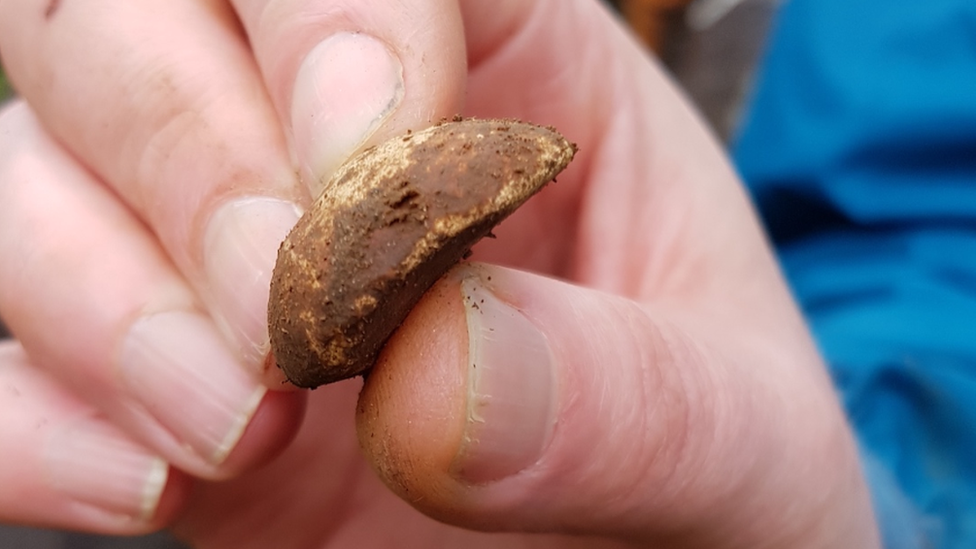Battle of Glenshiel remnants discovered after 300 years
- Published

The team have uncovered mortar shell fragments
Remnants from the Battle of Glenshiel have been uncovered by archaeologists.
The team, led by the National Trust for Scotland, have uncovered mortar shell fragments and a musket ball at the battle site near Kyle of Lochalsh.
Monday will mark the 300th anniversary of the "forgotten" battle between the Jacobites, who were supported by 300 Spanish troops, and a government army loyal to King George I.
Despite their superior numbers, the Jacobites lost.
Several large fragments of a coehorn mortar shell and a musket ball have been uncovered at the battle site, where James Francis Edward Stuart's ambitions to take the throne ended.
The battle was the first time the coehorn mortar shell was used in Britain, adding to the significance of the discovery.
Archaeologists and volunteers excavating the position once occupied by the Spanish troops also dug out a flattened musket ball.

A replica of the coehorn mortar
Derek Alexander, the trust's head of archaeology, said it was the first evidence found from the battle.
He added: "We were allowed to excavate four or five objects. The first that we looked at was the musket ball.
"It had been fired from below, up at the Spanish position. It hit the bedrock, flattened and fell to the ground and lay there. It was fired 300 years ago, hit the wall and fell to the ground. Now it has been found."

One item excavated was this musket ball
Mr Alexander said such finds "are the tangible remains of historic events, which can be quite rare".
He added that the rising "fizzled out", continuing: "Its failure also meant that there was little appetite for another uprising until Bonnie Prince Charlie and the '45. It effectively put paid to Jacobite ambitions for 30 years, which is a long time."
- Published7 June 2019
